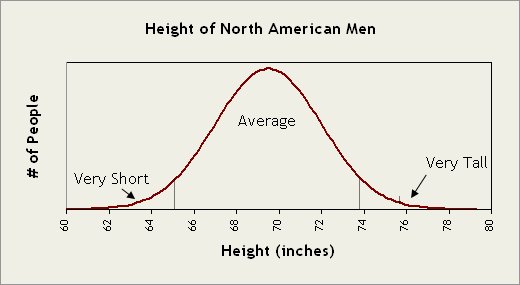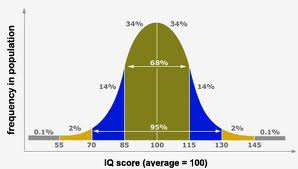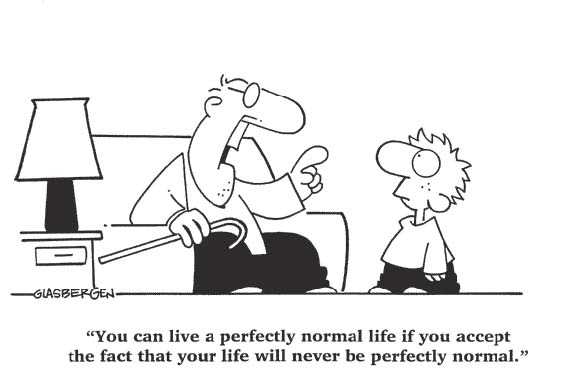Lesson 1 - Review and Defining Abnormal Behaviour
| Site: | MoodleHUB.ca 🍁 |
| Course: | Abnormal Psychology 35 RVS |
| Book: | Lesson 1 - Review and Defining Abnormal Behaviour |
| Printed by: | Guest user |
| Date: | Thursday, 30 October 2025, 1:14 AM |
Section/Lesson Objectives
The student will...
• understand and describe the five major perspectives of psychologists [This lesson]
• differentiate between the six views of abnormality [This lesson]
• apply the definition of abnormal behaviour used in this course [This lesson]
• explain how abnormal behaviour was viewed and treated in the past
• state the contributions of various historical figures to our current understanding of mental illness and treatment
• understand the effects of stereotyping and labelling on mental health
• describe the consequences associated with a self-fulfilling prophecy
• learn about the side effects of medications as well as their effects on the brain
• differentiate between the five types of reliability and three types of validity
• understand and describe the North American classification system for mental disorders
• describe the importance of clinical interviews and testing
Introduction
Review of Psychology?
You may recall from previous psychology courses that the field of psychology is not easily defined. The branches within psychology are very diverse and encompass many topics. The main factor that characterizes all branches of psychology, however, is that of behaviour. No matter what the focus of a branch is, psychologists study behaviour.
Not all psychologists have the same perspective on behaviour. The perspective a psychologist has influences the questions he or she asks and the information and data he or she considers important. Some of the main perspectives psychologists have regarding behaviour are given below.
 The behavioural perspective studies observable responses of individuals in differing environments. Biology, emotion, desire, and drive are not considered important. A dog that has been observed wagging its tail is not seen as happy or sad or afraid. Emotion is neither assumed nor considered - only the behaviour.
The behavioural perspective studies observable responses of individuals in differing environments. Biology, emotion, desire, and drive are not considered important. A dog that has been observed wagging its tail is not seen as happy or sad or afraid. Emotion is neither assumed nor considered - only the behaviour.
The biological perspective focuses on how the body and brain work together. Psychologists want to know how hormones, chemicals, and genes interact. They wonder how the body and brain co-ordinate and form memories, emotions, and sensory experiences.
The cognitive perspective reflects upon how the mind processes, stores, and retrieves information. This perspectives deals with thinking and knowing as they relate to experience and action.
The psychoanalytic perspective believes that behaviour comes from our unconscious desires. Freud was instrumental in the development of this perspective, and his theory of the id, ego, and superego (combined with sexual and aggressive drives) link unhappiness and maladaptive behaviour to the effects of unfulfilled wishes and childhood traumas.
The humanistic perspective assumes people have power to choose their life patterns and can grow and make their own meaning of life. This perspective rejects both the Freudian view that people are driven by unconscious forces and the behavioural view that humans are merely a collection of responses to environmental stimuli.
Please watch the short video below that summarizes the seven perspectives.
Many psychologists blend the best parts of several perspectives and theories to form what they consider to be a complete picture of behaviour. When individuals take the best ideas, concepts, and treatments regarding behaviour, they are said to have an eclectic view; they use eclectic-based treatment. When diagnosing and treating abnormal behaviour, an eclectic view is often most desirable.
As with any science, psychologists use the scientific method to study the behaviour of people (and other animals). The scientific method requires the researcher to have a hypothesis. A hypothesis clearly states what the researcher believes will be the outcome of an experiment; the scientist's beliefs are related to his or her perspective. Once again, what psychologists believe to be important is related to their outlooks and world-views.
Definition of Abnormal Psychology
Abnormal psychology studies the etiology and treatment of abnormal behaviour. The main problem with this, however, is that what one person considers abnormal may be considered normal by another person. Who then should decide what 'normal' is? How do scientists define 'abnormal'? In this unit, we will explore various definitions of abnormality; the last definition is the one used throughout this course.
Please watch the video below to see how a simple definition of abnormality can be difficult. Abnormality can mean different things to different people. That social norm view and statistical deviation view are discussed in this video.
 |
Statistical Deviation View of Abnormality
 Without delving into the finer details and concepts surrounding statistics, a simple definition of a statistical deviation is 'a noticeable departure from those traits or behaviours possessed by the majority of people.' If we use adult height as an example, a noticeable departure from the average or norm is a seven-foot tall individual (2.13 metres) or a four-foot tall individual (1.22 metres). Because the heights of the majority of adults are less extreme than either of the two examples, we can say that the two heights (seven feet and four feet) are abnormal. To restate this idea, individuals with characteristics and behaviours that are not within an average range (characteristics falling beyond a particular distance from the average value) can sometimes be considered abnormal. To continue with our height example, let us use 5 feet 10 inches as the mathematical average height of Canadian men. Many men are either taller than 5 feet 10 inches or shorter than 5 feet 10 inches, but they are not considered abnormal with respect to height. Scientists can statistically show abnormal by collecting data, calculating the average, determining the standard deviation (a variation from the arithmetic average), and then finding all individuals that are farther than two standard deviations away from the average. The individuals farther than two standard deviations from the average generally make up about 5% of the sample population. This can be graphically displayed in a distribution curve, also known as a bell curve.
Without delving into the finer details and concepts surrounding statistics, a simple definition of a statistical deviation is 'a noticeable departure from those traits or behaviours possessed by the majority of people.' If we use adult height as an example, a noticeable departure from the average or norm is a seven-foot tall individual (2.13 metres) or a four-foot tall individual (1.22 metres). Because the heights of the majority of adults are less extreme than either of the two examples, we can say that the two heights (seven feet and four feet) are abnormal. To restate this idea, individuals with characteristics and behaviours that are not within an average range (characteristics falling beyond a particular distance from the average value) can sometimes be considered abnormal. To continue with our height example, let us use 5 feet 10 inches as the mathematical average height of Canadian men. Many men are either taller than 5 feet 10 inches or shorter than 5 feet 10 inches, but they are not considered abnormal with respect to height. Scientists can statistically show abnormal by collecting data, calculating the average, determining the standard deviation (a variation from the arithmetic average), and then finding all individuals that are farther than two standard deviations away from the average. The individuals farther than two standard deviations from the average generally make up about 5% of the sample population. This can be graphically displayed in a distribution curve, also known as a bell curve.
The area on the left labelled "very short" and the white area on the right labelled "very tall" represent individuals who are either abnormally short or abnormally tall. Those individuals fall more than two standard deviation units from the average height. The middle section labelled "average" represents those individuals who have what may be considered "normal height" - those around the average.
Bell Curve of Height

If the bell curve below represented intelligence instead of height (intelligence on the x-axis and number of people on the y-axis), the individuals in the yellow and grey area on the left of the curve would be considered mentally retarded while the individuals falling within the yellow and grey area on the right would be considered gifted or akin to genius! Would you label a mentally challenged individual as abnormal? Would you label a genius as abnormal?
While the statistical method of determining abnormality is scientific and valid, it does nothing to  address certain important issues such as health and welfare. For example, in the past two decades the bell curve for weight (mass) in North America has shifted right (with mass on the x-axis). This means that we, as a society, are on average becoming heavier. This may be the norm, but is it healthy? Is it desirable?
address certain important issues such as health and welfare. For example, in the past two decades the bell curve for weight (mass) in North America has shifted right (with mass on the x-axis). This means that we, as a society, are on average becoming heavier. This may be the norm, but is it healthy? Is it desirable?
Bell Curve of IQ Scores

If the entire population took an IQ test, the scores would fall into a bell-shaped curve around the most frequent score of 100. More than two-thirds of people score between 85 and 115 on lQ tests.
Intelligence Quotient: number used to express the apparent intelligence of a person.
Social View of Abnormality

Culture and society have proven to be very powerful behaviour-shaping forces. When people violate the rules of their specific culture, they may be considered abnormal. Also, because of the relative ease of mobility among people of different countries (and thus cultures), misunderstandings can occur among individuals. For example, in countries such as Indonesia, using your left hand to eat is offensive. In these cultures people use their left hands to cleanse after a bowel movement. To eat with the left-hand, therefore, is considered poor manners and regarded with disgust. In this example, and countless others, a person who frequently violates the unwritten rules of a society/culture may be considered not only rude but deviant and, therefore, abnormal.
Sometimes people who challenge the norms of a society are considered deviant although they may be working toward good causes. Nellie McClung, a Canadian feminist leader, politician, author and social activist (with Alberta ties!) who wished to improve the status of women, would be considered abnormal by this view because she acted for change against the norm.
Maladaptive View of Abnormality
Another common way to define abnormality is to refer to maladaptive behaviour. People can be maladaptive to themselves, which means they do not have the ability to reach their own goals and to adapt to the demands of their lives. Individuals can also be maladaptive to society, which means they interfere with or disrupt the functioning of various groups in society.
 Individuals with substance abuse problems provide examples of maladaptive behaviour. Walter, for example, is a middle-aged male who consumes alcohol after work every day. He usually drinks until he can no longer function effectively. He argues with friends, family, and co-workers. His behaviour has become so offensive at work that he has lost his job. Walter is not motivated to find another job and spends the money he has left on alcohol and sundry items (magazines, DVDs, junk food). Walter spends time thinking about how worthless he is and how life does nor treat him fairly. He is often angry, aggressive, and depressed. Because he cannot cope with his specific life circumstances, Walter is defined as abnormal within this view.
Individuals with substance abuse problems provide examples of maladaptive behaviour. Walter, for example, is a middle-aged male who consumes alcohol after work every day. He usually drinks until he can no longer function effectively. He argues with friends, family, and co-workers. His behaviour has become so offensive at work that he has lost his job. Walter is not motivated to find another job and spends the money he has left on alcohol and sundry items (magazines, DVDs, junk food). Walter spends time thinking about how worthless he is and how life does nor treat him fairly. He is often angry, aggressive, and depressed. Because he cannot cope with his specific life circumstances, Walter is defined as abnormal within this view.
As with all these views of abnormality, the maladaptive view also has shortcomings. In Nazi Germany in the last century, for example, a German citizen who was unable to understand and adapt to the position of Hitler was considered abnormal. Is it really abnormal to dislike the persecution of a minority group?
Personal Distress View of Abnormality
With this view of abnormality, the individual's own perception matters. If Sally  has to wash her hands exactly 26 times per day, but it does not bother her, then she is not abnormal. If John has to wash his hands exactly 26 times per day and it does bother him, then it is a problem and he would be considered abnormal. If people are satisfied with their lives, then that is all that matters. With this view, Ted Bundy (a serial killer) would be normal because he was content with his actions. Contrary to this view, distress is not necessarily a negative experience. Fear, for example, can alert us to dangerous situations, and the expression of grief can help us recover from tragic events.
has to wash her hands exactly 26 times per day, but it does not bother her, then she is not abnormal. If John has to wash his hands exactly 26 times per day and it does bother him, then it is a problem and he would be considered abnormal. If people are satisfied with their lives, then that is all that matters. With this view, Ted Bundy (a serial killer) would be normal because he was content with his actions. Contrary to this view, distress is not necessarily a negative experience. Fear, for example, can alert us to dangerous situations, and the expression of grief can help us recover from tragic events.
Deviation from an Ideal View of Abnormality
The term ideal is a difficult concept to define. Like the term normal, ideal is  person-specific. A person may be seen as abnormal even if that person is functioning well. Some vegetarians may think that an ideal individual would avoid consuming the muscle tissue of animals. To these people, meat-eaters are abnormal. In essence, because we all have our own opinions of ideal, and because no one person can meet everyone's version of ideal we could all be considered abnormal to certain degrees.
person-specific. A person may be seen as abnormal even if that person is functioning well. Some vegetarians may think that an ideal individual would avoid consuming the muscle tissue of animals. To these people, meat-eaters are abnormal. In essence, because we all have our own opinions of ideal, and because no one person can meet everyone's version of ideal we could all be considered abnormal to certain degrees.
Medical Disorder View of Abnormality
 If an underlying physical condition affects behaviour, the behaviour is considered to be abnormal and not just a symptom of the physical disorder. Included in this definition are Alzheimer's disease, Down syndrome, and many other conditions.
If an underlying physical condition affects behaviour, the behaviour is considered to be abnormal and not just a symptom of the physical disorder. Included in this definition are Alzheimer's disease, Down syndrome, and many other conditions.
Psychologists holding this view hoped that biological causes could be identified for all psychological problems; they now know this is not possible. For example, conversion hysteria (symptoms may include becoming blind and/or deaf with no physical cause), is the result of an unconscious and ineffective coping mechanism used to deal with unwanted emotions. Individuals with multiple personality disorder (MPD), also known as dissociative identity disorder, can also be included here. One case study, described in an 1840 monograph by Despine (and recounted by F. Putnam) involved an 11 year-old girl, Estelle, who initially exhibited paralysis and hypersensitivity to touch. Estelle later developed a second personality who could walk and play but could not tolerate her mother's presence. She exhibited marked differences in behaviour, preferences, and relationships between the two personality states. The power of the mind is astounding!
A Working Definition of Abnormal Behaviour
The definition is based on the work of Holmes (1994) who bases the definition on three criteria, two of which, for the purpose of this course, will be accepted entirely and the third only with caution. The criteria are:
 Whether an individual is distressed by his/her behaviour -- If a woman is so depressed that she cannot even eat, clothe, or bathe herself, and she wants to be happy, then we can assume the woman is not living her ideal life. The woman's debilitating depression can be considered abnormal behaviour.
Whether an individual is distressed by his/her behaviour -- If a woman is so depressed that she cannot even eat, clothe, or bathe herself, and she wants to be happy, then we can assume the woman is not living her ideal life. The woman's debilitating depression can be considered abnormal behaviour.
Whether the behaviour affects the individual's life or functioning in a negative way -- If a woman has a phobia of other people's hair (trichopathophobia), for example, and thus cannot go out to shop for groceries, work in an office building, or go to a movie, the phobia is affecting her life negatively. The behaviour, therefore, can be considered abnormal.
Whether the behaviour is deemed culturally acceptable - In Canadian culture it is not common for people to greet other people by kissing them on top of the head. If a person engages in this type of behaviour, he or she may be considered abnormal. Because Canada has people from diverse cultural backgrounds, this last determinant of abnormal behaviour must be considered carefully.
In essence, any definition of abnormality will be limited in some way, but a definition must be used nonetheless. No one definition of abnormality is the best. Everyone and every culture recognizes some form of abnormality even if it cannot be defined easily. An important thing to remember is to be open-minded and flexible and allow your definition to change in light of new information.
In summary, behavior that causes subjective distress of the individual, behavior that is psychologically or socially disabling, and behavior that deviates from social norms is considered abnormal.

Lesson Review
Lesson 1 draws to a close. Were you overwhelmed by the amount of material and the number of different ideas presented? Do not dismay! You will likely find future lessons less hectic. If you have managed to understand the main ideas in the lesson notes and are ready to tackle some assignments, you have done well!
|
To summarize: • understand and describe the five major perspectives of psychologists • differentiate between the six views of abnormality • apply the definition of abnormal behaviour used in this course |